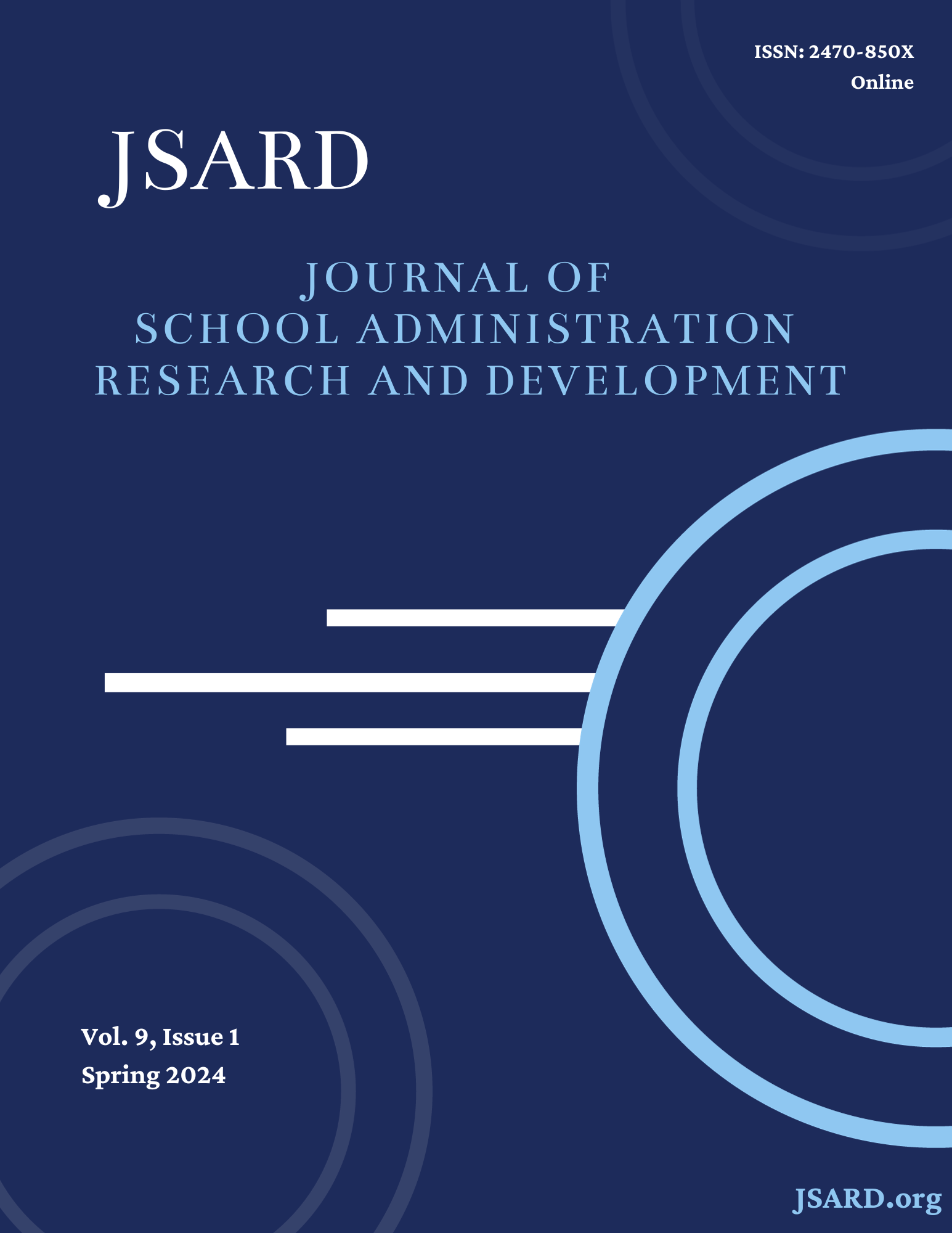Communication Directors and Public Relations Professionals in Public School Districts
A Literature Review
DOI:
https://doi.org/10.32674/jsard.v9i1.3991Keywords:
communication, public relations, public schools, communication planningAbstract
A school district’s need to satisfy the school community’s expectations for current, accurate information and manage a social media presence has increased the necessity for superintendents to employ public relations professionals. As such, these professionals are a recent addition to many school districts’ administrative teams. However, few research studies were located that focused on public relations professionals or communication directors in public schools. The purpose of this literature review was to identify empirical studies and professional association resources that provided historical, contextual, and relevant information about communication directors in school districts. Based on the findings, we uncovered three themes related to the history, roles and responsibilities, and standards for public relations professionals. Such information can help practitioners support communication functions and help researchers identify needed lines of inquiry.
Downloads
References
Bagin, D., Gallagher, D. R., & Moore, E. H. (2008). The school and community relations (9th ed.). Pearson/Allyn & Bacon.
Chappelow, M. A. (2015). Standards for educational public relations and communications professionals. Journal of School Public Relations, 36(4), 421-423. https://doi.org/10.3138/jspr.36.4.421 DOI: https://doi.org/10.3138/jspr.36.4.421
Cohen, P. M. (1987). A public relations primer: Thinking and writing in context. Prentice Hall.
Crable, R. E., & Vibbert, S. L. (1986). Public relations as communication management. Bellwether.
Díaz-Campo, J., & Segado-Boj, F. (2015). Journalism ethics in a digital environment: How journalistic codes of ethics have been adapted to the Internet and ICTs in countries around the world. Telematics and Informatics, 32(4), 735-744. https://doi.org/10.1016/j.tele.2015.03.004 DOI: https://doi.org/10.1016/j.tele.2015.03.004
Dodd, M. D., Brummette, J., & Hazleton, V. (2015). A social capital approach: An examination of Putnam’s civic engagement and public relations roles. Public Relations Review, 41(4), 472-479. https://doi.org/10.1016/j.pubrev.2015.05.001 DOI: https://doi.org/10.1016/j.pubrev.2015.05.001
Guthrie, J. W., & Schuermann, P. J. (2009). Successful school leadership: Planning, politics, performance, and power. Pearson. https://www.pearson.com/
Holliday, A. E. (1988). In search of an answer: What is school public relations? Journal of Educational Public Relations, 11(2), 12.
Hughes, L. W., & Hooper, D. W. (2000). Public relations for school leaders. Pearson. https://www.pearson.com/
International Association of Business Communicators. (2023). Timeline of IABC’s history. https://www.iabc.com/About/IABC-Timeline
Johnston, G. L., Gross, G. E., Townsend, R. S., Lynch, P., Novotney, P. B., Roberts, B., Garcy, L., & Gil, L. (2002). Eight at the top: A view inside public education. The Scarecrow Press, Inc. https://rowman.com/
Kowalski, T. J. (2011). Public relations in schools. (5th ed.). Pearson. https://www.pearson.com/
Martinson, D. L. (1999). School public relations: The public isn’t always right. NASSP Bulletin, 83(609), 103-109. https://www.nassp.org/publication-archives/nassp-bulletin/ DOI: https://doi.org/10.1177/019263659908360914
Moore, E. H. (2009). School public relations for student success. (2nd ed.). Sage. http://dx.doi.org/10.4135/9781483350509 DOI: https://doi.org/10.4135/9781483350509
Moore, E. H., Bagin, D. H., & Gallagher, D. R. (2020). The school and community relations. (12th ed.). Pearson. https://www.pearson.com
National Policy Board for Educational Administration. (2015). Professional standards for educational leaders 2015. https://www.npbea.org/wp-content/uploads/2017/06/Professional-Standards-for-Educational-Leaders_2015.pdf
National School Public Relations Association. (2016). The complete crisis communication management manual for schools. (4th ed.). Pearson. https://www.nspra.org/PR-Resources/Books-and-Publications-Online-Store
National School Public Relations Association. (2023a). About us. https://www.nspra.org/About-Us
National School Public Relations Association. (2023b). Getting started: Why school public relations? https://www.nspra.org/PR-Resources/Starting-a-Public-Relations-Program
Norris, S. (1984). Public relations. Prentice Hall.
Public Relations Society of America. (2023). About. https://www.prsa.org/about
Texas School Public Relation Association. (2020). Code of ethics. https://tspra.org/code-of-ethics/
Toledano, M., & Avidar, R. (2016). Public relations, ethics, and social media: A cross-national study of PR practitioners. Public Relations Review, 42(1), 161-169. https://doi.org/10.1016/j.pubrev.2015.11.012 DOI: https://doi.org/10.1016/j.pubrev.2015.11.012
Vieira, E. T., Jr., & Grantham, S. (2015). Determining factors leading to strategic management PR practitioner roles. Public Relations Review, 41(4), 544-550. https://doi.org/10.1016/j.pubrev.2015.05.005 DOI: https://doi.org/10.1016/j.pubrev.2015.05.005
Wilcox, D. L., Cameron, G. T., & Reber, B. H. (2021). Public relations: Strategies and tactics (11th ed.). Pearson. https://www.pearson.com
Downloads
Published
Issue
Section
License
Copyright (c) 2024 Journal of School Administration Research and Development

This work is licensed under a Creative Commons Attribution-NonCommercial-NoDerivatives 4.0 International License.
All published articles are licensed under a Creative Commons Attribution-NonCommercial-NoDerivs 4.0 Unported License.


.png)
